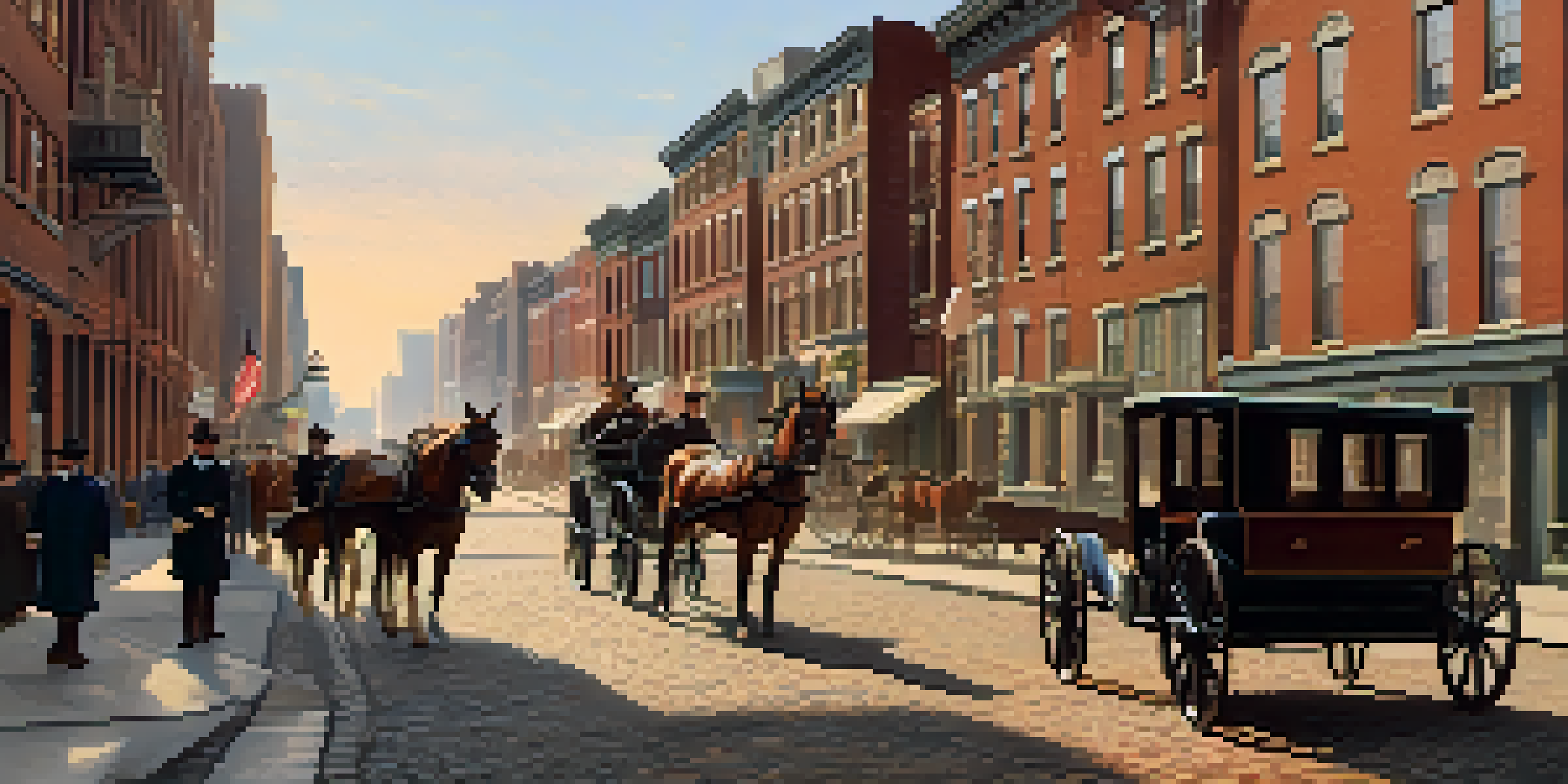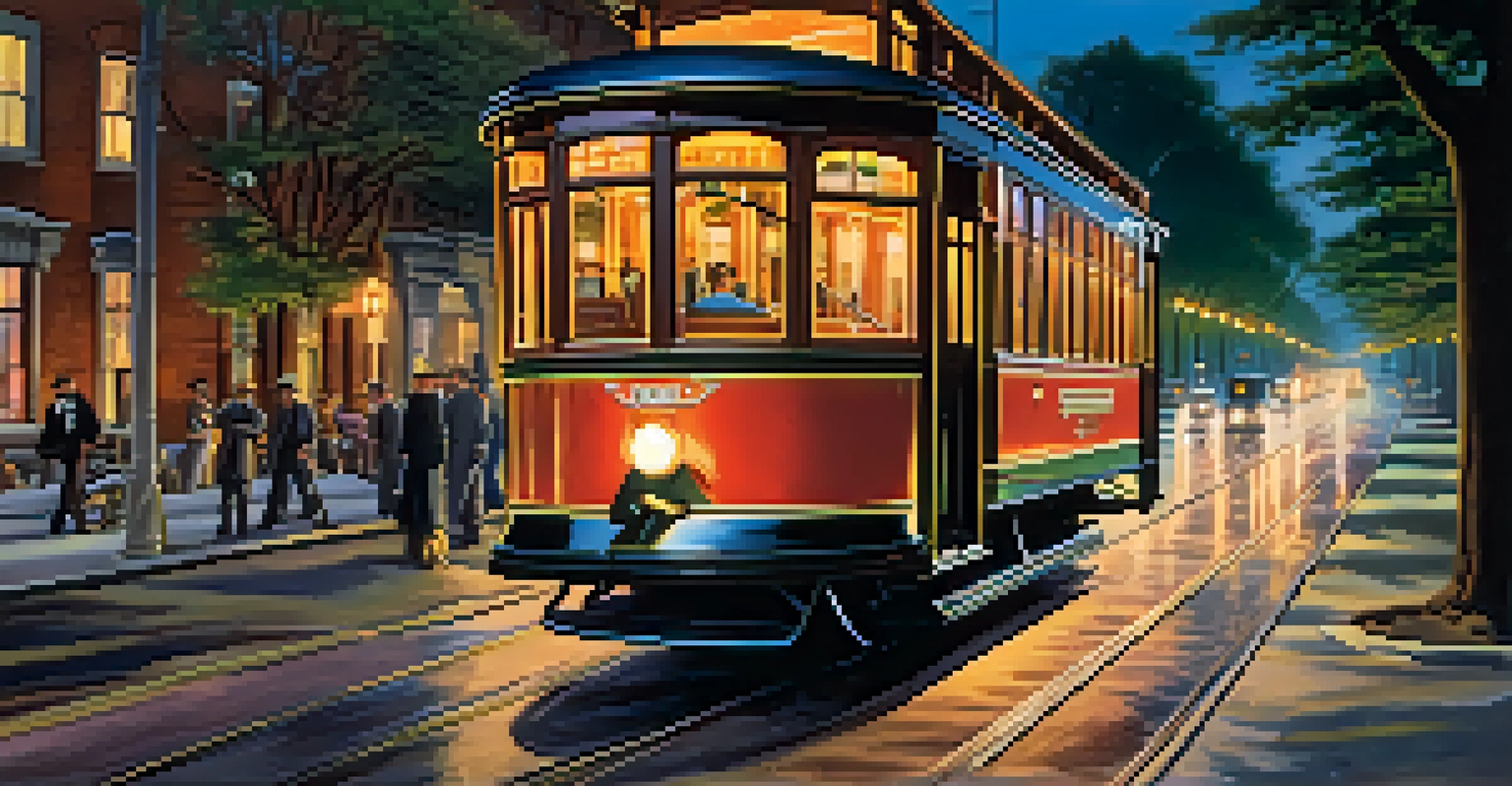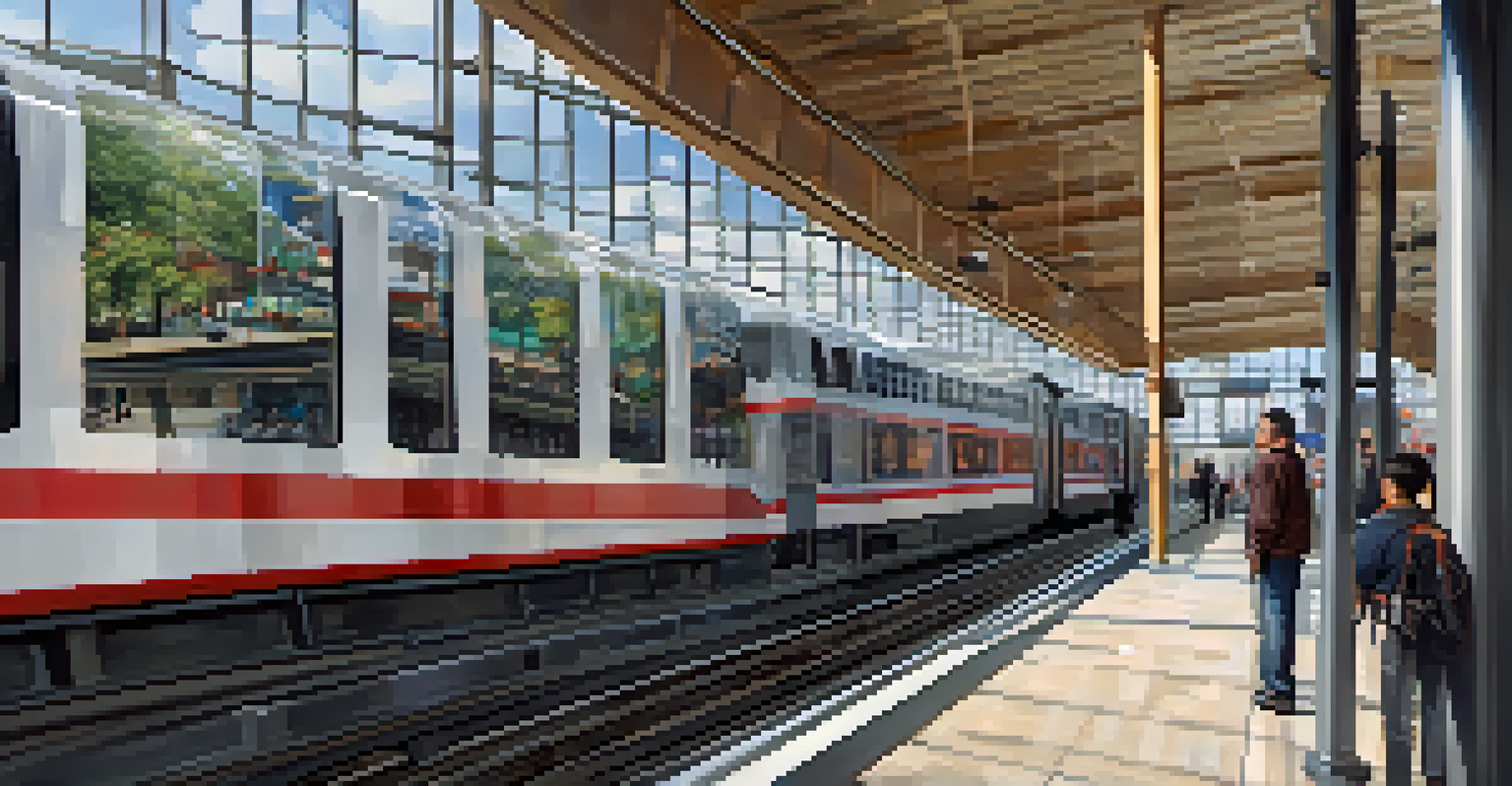The Development of Public Transportation in Philadelphia

Early Beginnings: Horse-Drawn Carriages and Trolleys
Public transportation in Philadelphia dates back to the early 19th century, when horse-drawn carriages first began to ferry residents around the city. These early modes of transport were a game changer, allowing people to travel further and more efficiently than ever before. Imagine the bustling streets filled with the sound of hooves clattering against cobblestones, as citizens navigated their daily lives.
Public transport is a critical part of the urban ecosystem, linking people to places and fostering community.
As the population grew, the demand for more efficient transport led to the introduction of horse-drawn trolleys in the 1850s. These trolleys provided a reliable means of transit, linking neighborhoods and making it easier for people to access jobs and services. It was a significant step toward the modern public transportation we know today, paving the way for future innovations.
The success of the trolley system demonstrated the need for a more organized and expansive public transport network. This laid the groundwork for the next big leap in transportation technology: electric trolleys, which would revolutionize the way Philadelphians moved around their city.
The Rise of Electric Trolleys: A New Era
The introduction of electric trolleys in the late 19th century marked a turning point in Philadelphia's public transport history. These trolleys offered faster and more reliable service, attracting even more riders and transforming urban mobility. Picture the bright lights of electric trolleys illuminating the streets, as they whisked passengers along their routes.

Electric trolleys not only expanded the reach of public transportation but also contributed to the development of suburban areas. As people found it easier to commute, neighborhoods began to flourish outside the city center, leading to a more connected metropolitan area. This shift fundamentally changed the landscape of Philadelphia, both physically and socially.
Evolution of Philly's Transit System
Philadelphia's public transportation has evolved from horse-drawn carriages to a modern network, reflecting the city's growth and changing needs.
However, the rise of the automobile in the mid-20th century posed a new challenge to the trolley system. As cars became more popular, the ridership began to decline, leading to a reevaluation of how public transportation should be managed in an increasingly car-centric society.
The Birth of the SEPTA: Consolidating Public Transit
In 1964, the Southeastern Pennsylvania Transportation Authority (SEPTA) was established to unify the various transit systems in the region. This consolidation aimed to provide a more cohesive and efficient public transportation experience for Philadelphia’s residents. Imagine a sprawling puzzle that needed to be put together; SEPTA was the final piece that ensured all parts connected smoothly.
The future of public transit lies in sustainable practices that meet the needs of the present without compromising the ability of future generations to meet their own needs.
By bringing together buses, trolleys, and regional rail services under one umbrella, SEPTA created a comprehensive network that served the diverse needs of the community. This significant move not only improved service reliability but also made navigating the city much simpler for daily commuters. Riders now had access to a variety of transport options with just one fare card.
SEPTA's formation was a critical response to the challenges of urban transit, and it set the stage for future developments. As public transit continued to adapt and evolve, SEPTA would play a key role in shaping the future of transportation in Philadelphia.
Modernization Efforts: Embracing New Technologies
As technology advanced, so did the efforts to modernize Philadelphia's public transportation system. SEPTA began implementing upgrades such as real-time tracking and mobile ticketing, making it easier for riders to plan their journeys. These innovations brought a sense of convenience that was previously unavailable, as passengers could check bus and train schedules right from their smartphones.
Moreover, the modernization efforts included improvements to infrastructure, such as upgraded train stations and enhanced accessibility for individuals with disabilities. This focus on inclusivity ensured that public transportation could serve everyone, regardless of their mobility needs. It's like a welcoming open door for all residents, encouraging them to take advantage of the services offered.
SEPTA's Role in Transit Consolidation
The establishment of SEPTA in 1964 unified various transit systems, creating a more efficient and cohesive public transportation experience for residents.
These enhancements not only improved the rider experience but also positioned SEPTA as a forward-thinking agency ready to tackle the challenges of urban transit in the 21st century. As Philadelphia continues to grow, the need for a reliable and modern public transportation system remains paramount.
Sustainability Initiatives: A Greener Future
In recent years, SEPTA has made strides toward becoming more environmentally friendly. With a growing awareness of climate change, the agency has implemented initiatives aimed at reducing its carbon footprint. This includes transitioning to electric buses and exploring renewable energy sources, which are essential for creating a sustainable transit system.
The push for sustainability aligns with the broader goals of the city to promote green living and reduce traffic congestion. By encouraging the use of public transit, SEPTA plays a crucial role in cutting down on emissions and improving air quality. Think of it as a collective effort where each rider contributes to a healthier planet.
As Philadelphia embraces these sustainability initiatives, the public transportation system is not just a means to get from point A to B; it becomes a vital component of a larger environmental strategy. This forward-thinking approach ensures that public transportation remains relevant and responsible in the face of future challenges.
The Role of Public Transportation in Urban Development
Public transportation has always been a catalyst for urban development, and Philadelphia is no exception. The presence of reliable transit options influences where people choose to live, work, and play. Areas near transit lines often see increased property values and economic activity, creating vibrant neighborhoods that attract businesses and residents alike.
Furthermore, public transit fosters a sense of community by connecting different parts of the city. It provides access to jobs, education, and services that might otherwise be out of reach for some residents. Imagine the stories of individuals who have been able to pursue their dreams thanks to the accessibility that public transit offers.
Focus on Sustainability and Inclusivity
Recent sustainability initiatives by SEPTA aim to reduce environmental impact while enhancing accessibility, ensuring public transit serves all community members.
As Philadelphia continues to grow and evolve, the interplay between public transportation and urban development will remain essential. It's a symbiotic relationship that not only enhances the city's infrastructure but also enriches the lives of its residents, making it a better place to call home.
Looking Ahead: The Future of Public Transportation in Philadelphia
As we look to the future, the challenges facing public transportation in Philadelphia are significant, yet manageable. With ongoing investments in infrastructure and technology, there is a strong commitment to making public transit more efficient and accessible. The goal is to create a system that meets the needs of a growing population while adapting to changing circumstances.
Community engagement will be crucial in shaping the future of public transportation. By listening to the voices of residents and understanding their needs, SEPTA can continue to innovate and improve services. It's a collaborative effort that invites everyone to be part of the conversation, ensuring that public transit reflects the community it serves.

Ultimately, the future of public transportation in Philadelphia holds great promise. With a focus on sustainability, modernization, and community involvement, the city is poised to build a transit system that not only meets today's needs but also lays the groundwork for future generations.